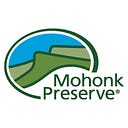Research Report #14 — Temperatures 0° or below
For many years scientists and naturalists have been studying and observing the flora and fauna of the Shawangunk Ridge. Foremost among them was Daniel Smiley, for whom Mohonk Preserve’s Daniel Smiley Research Center is named. Dan wrote numerous reports summarizing his observations on various topics. This regularly occurring series will feature some of these reports; some hold tremendous scientific value today and just await an interested researcher to follow up, others showcase a quirky sense of humor or highlight an oddity of nature.
Read the report: “Temperatures 0° or Below.” April 1979. Daniel Smiley.
A Note from Paul Huth, Director of Research Emeritus:
Now in its 123rd year of operation, the Mohonk Lake Cooperative Weather Station, as part of the National Weather Service, allows us to investigate changes over time. In the presentation of Daniel Smiley’s 1979 Research Report — “Temperatures 90° or Above” (Blog Post №6, September 14, 2017), which showed a dramatic increase in those records over the last 40 years, we wanted to look at the opposite end of the thermometer and present Dan’s 1979 Research Report “Temperatures 0° or Below.”
Dan presented the following all time minimum temperature records for the weather station. The lowest temperature ever recorded at Mohonk, -24°, occurred on December 30th, 1917. The second lowest, -20°, was recorded the next day, December 31, 1917. The coldest in January, -19°, occurred on the 15th in 1957. The coldest in February was -20°, recorded on the 9th in 1934. While the month of March has less below zero records, the coldest, -8°, was recorded on the 5th in 1912. Since 1975, we note the following low temperatures for the period-February 18, 1979, -13°, January 17, 1982, -13°, January 27, 1994, -19°, March 1, 1980, -3°, and December 25, 1980, -9°.
In the 40 years since Dan wrote his Research Report, there have been impressive cold records, but with not nearly the frequency as in the first 80 years. For an example, if we look at the winters with the most days of 0° or below, which Dan defined as “three or more times the average” of 5, he found five demonstrative winters in the 80 years of record: 1917–1918=19 days, 1933–1934=18 days, 1906–1907=17 days, 1903–1904=16 days, and 1919–1920=15 days. Since then, no winters have had “three or more times the average”. The closest we come is 11 days in January and February 1979, 10 days in January 1982, and 11 days in January and February, 1994. During this latter 11 days, we note that the fifth coldest reading on record occurred, -19°, on January 27th, 1994.
In his 80 year analysis, Dan found that there were seven winters with no 0° or below readings: 1915, 1924, 1937, 1944, 1949, 1953, and 1964. In the 40 years since then, we find six winters with no 0° or below readings: 1998, 2001, 2002, 2006, 2008, and 2012.
Dan often used decadal divisions in analysis. In this case, the total number of days below 0° per decade, which, while variable, shows an overall declining trend as follows: 1896–1905=51 days, 1906–1915=74 days, 1916–1925=77 days, 1926–1935=46 days, 1936–1945=27 days, 1946–1955=35 days, 1956–1965=44 days, 1966–1975=46 days, 1976–1985=62 days, 1986–1995=39 days, 1996–2005=39 days, and 2006–2015=25 days.
If, as Dan did, we look at what we commonly call cold snaps, of three or more consecutive days where 0° or below was recorded, we note that it is a fairly common occurrence to have two to four day runs. However, the record is still that of a 9 consecutive day run, from the 10th to the 18th of February, 1979.
Read the report: “Temperatures 0° or Below.” April 1979. Daniel Smiley.
